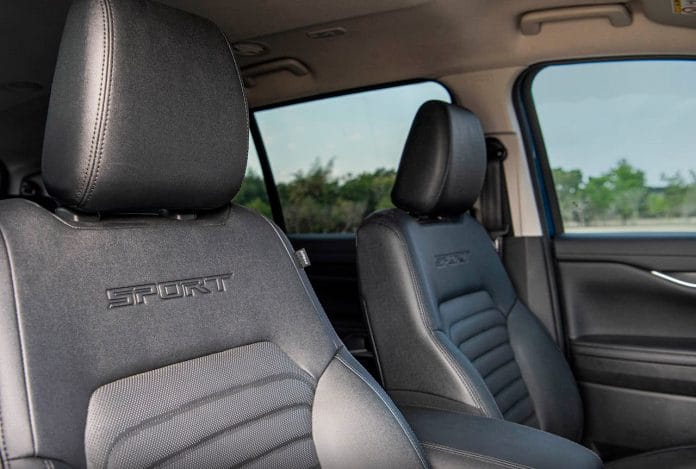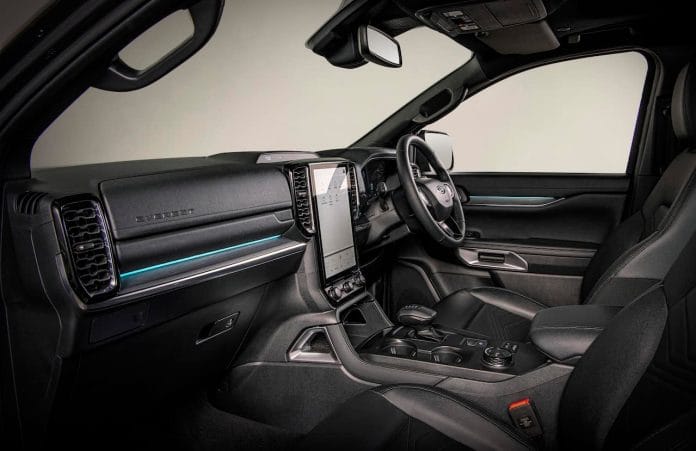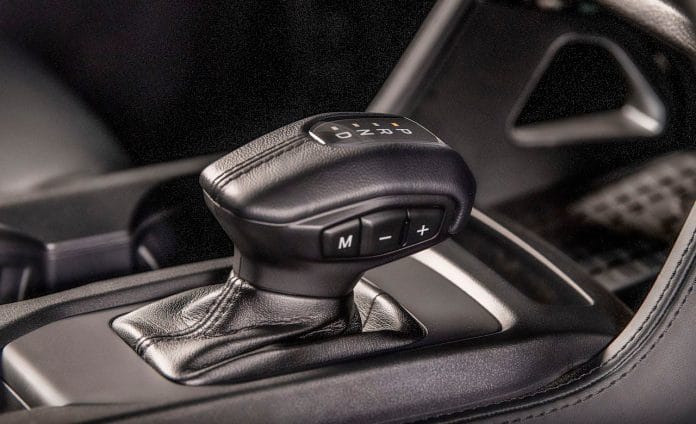Following the reveal of the next-generation Ford Ranger last year, and right at the heels of the recent unveiling of its hotter version, the Ranger Raptor, the Blue Oval isn’t resting just yet. Ford has pulled the wraps off the next-generation Everest – and it’s looking pretty good for the SUV segment, especially in the Philippines where it’s hotly contested.
As both the pickup and the SUV sit on the same heavily revamped T6 platform, the new Ford Everest inevitably follows the boxy design of the Ranger. That said, the Everest gets the C-clamp DRLs up front that flank the huge meshed grille a la Ford Maverick. The side profile is largely retained, while the rear tailgate gets a massive restyling, thanks to the futuristic design of the taillight graphics. The wide bar on the tailgate gets an Everest wordmark to conclude the design.
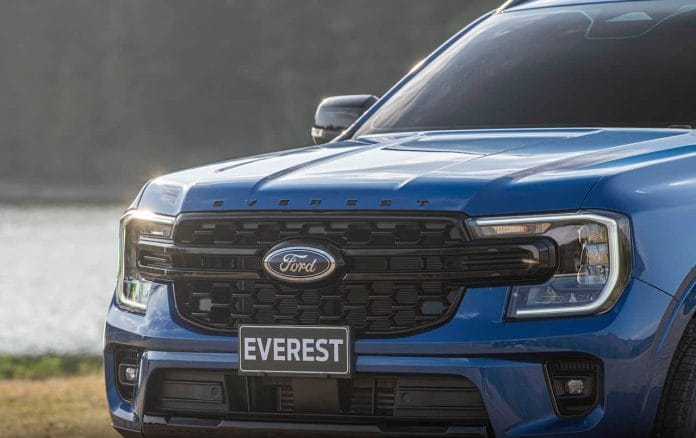
The updates are skin-deep, though. The new Everest has wider tracks (+50 mm) for better on-road stability, while tweaks to the dampers improve off-road capabilities.
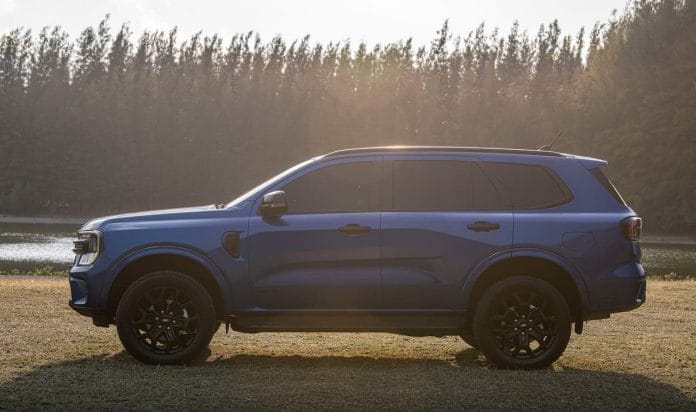
Speaking of off-road capabilities, the Everest touts up to 800mm of water-fording capabilities, while approach angle and ground clearance are both slightly improved. The roof can hold static loads of 350 kg or dynamic loads as heavy as 100 kg. The engine bay also has room for a second battery for aftermarket accessories.

Power plant options of the new Everest are largely the same as the Ford Ranger. There’s a turbodiesel 3.0-liter V6 for the range-topper, while a smaller 2.0-liter diesel equipped with one or two turbochargers is also available. These are highly dependent on the market.
For those who don’t want a diesel, the Everest will be offered from 2023 with the familiar 2.3-liter EcoBoost gasoline unit. Depending on the engine, there’s a choice between a 6-speed manual or a 10-speed automatic.

Ford said that much of the updates on the Everest come from customer feedback, including women. In fact, the updates on the interior came from inputs from female customers, ensuring that the cabin will be comfortable regardless of gender.
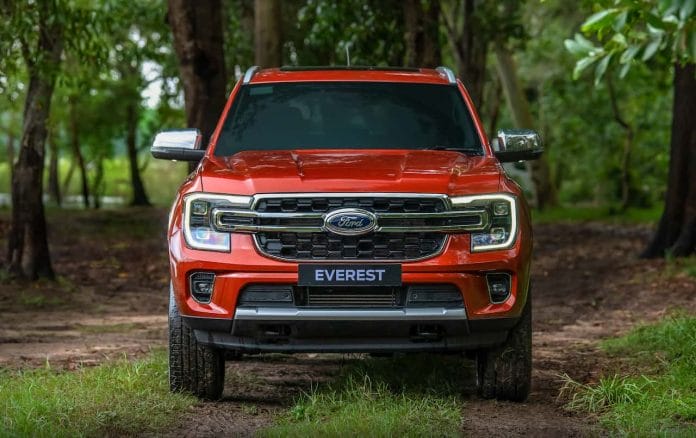
That said, the changes on the cabin are massive, including the end-to-end dashboard, the slew of soft-touch materials, and the now massive SYNC 4 vertical touchscreen that measures 10.1 inches or 12.0 inches. Top-spec variants will also get a 12.3-inch digital instrument cluster, scaled down to 8 inches for the lesser trims.

The new Everest brims with tech and safety features as well. There’s a 360-degree camera and matrix LED headlights on the menu, as well as adaptive cruise control, lane-keeping assist, automatic evasive steer assist, and post-collision braking system. The midsize SUV can also park itself, which has been available in other Ford models before, while its blind-spot monitor supports trailers of up to 10 meters long and 2.4 meters wide. The Everest is also equipped with a total of nine airbags, including an industry-first mid-second row airbag that absorbs impact between passengers in case of a side-impact collision.
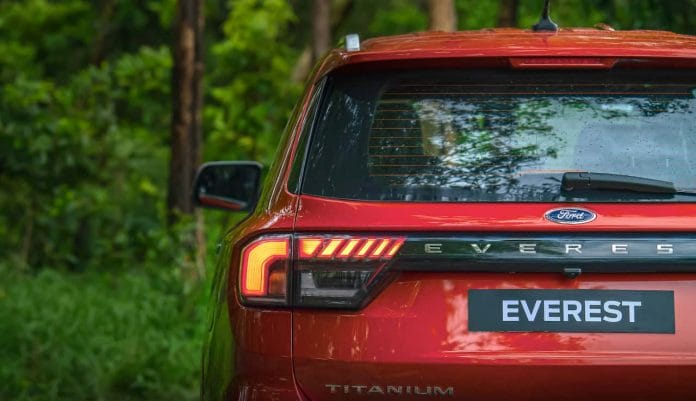
The Ranger has undertaken over a million kilometers of testing before its debut, Likewise, the Everest also received similar full-blown testing from Ford, reaching hundreds and thousands of kilometers across different countries and in all types of terrains and extreme temperatures.
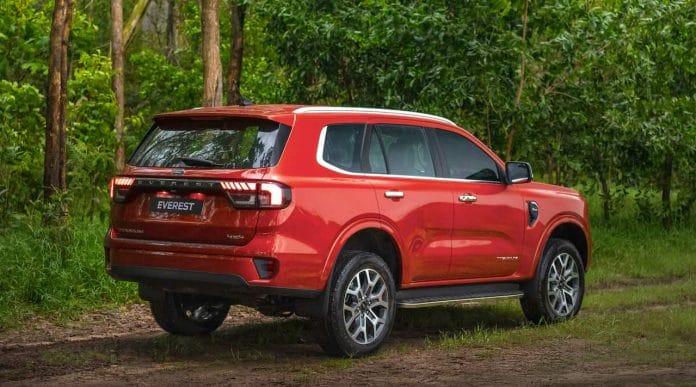
However, Ford said that the tests aren’t limited only to how the Everest would perform; passenger feeling and comfort are also accounted for after a long journey.
The next-generation Ford Everest will be launched in various markets within the year, with market-specific specs happening as the dates draw near.
Ford Philippines has yet to indulge us with the launch date information for the local market, but we’re waging it will be at the second half of 2022.



